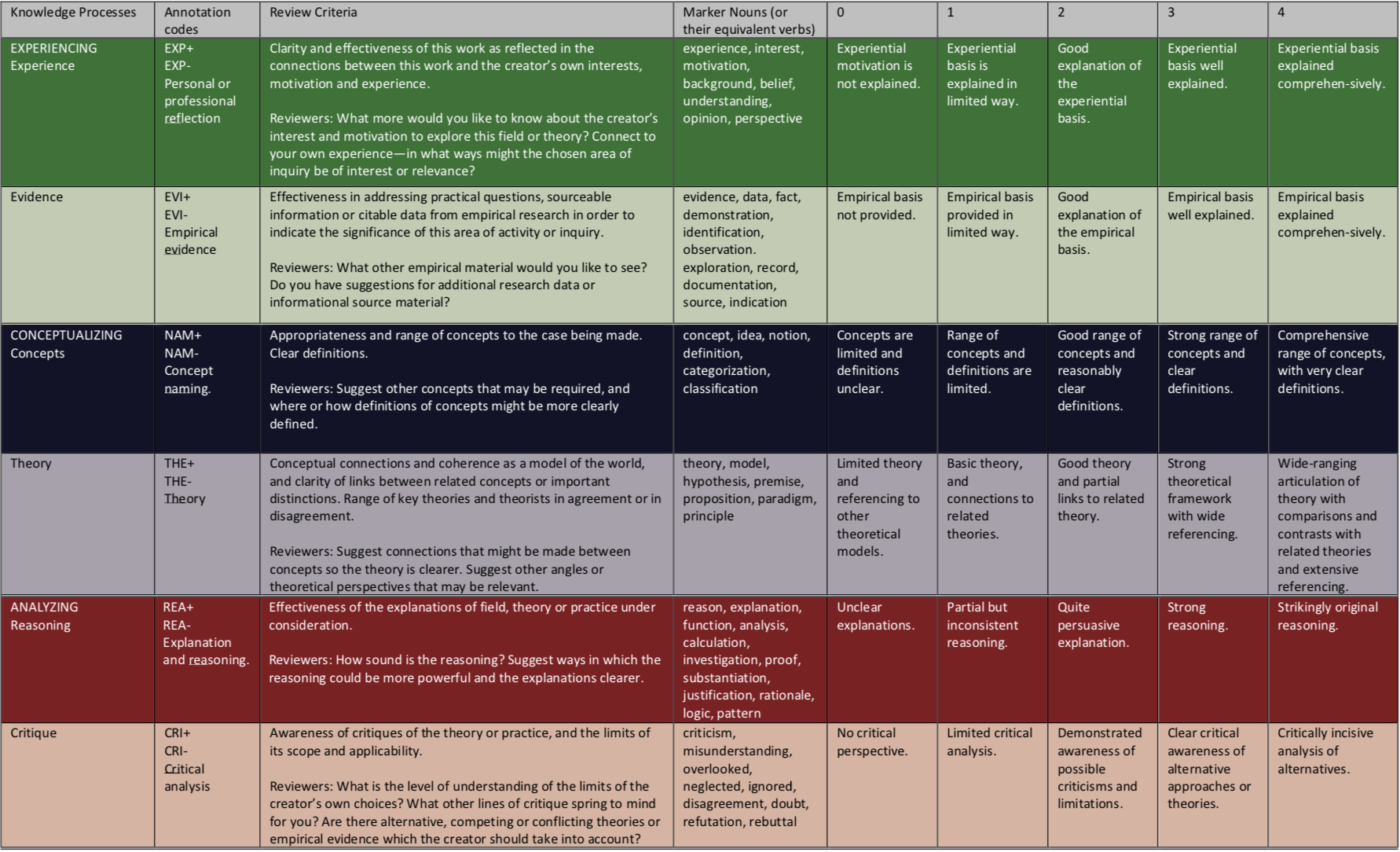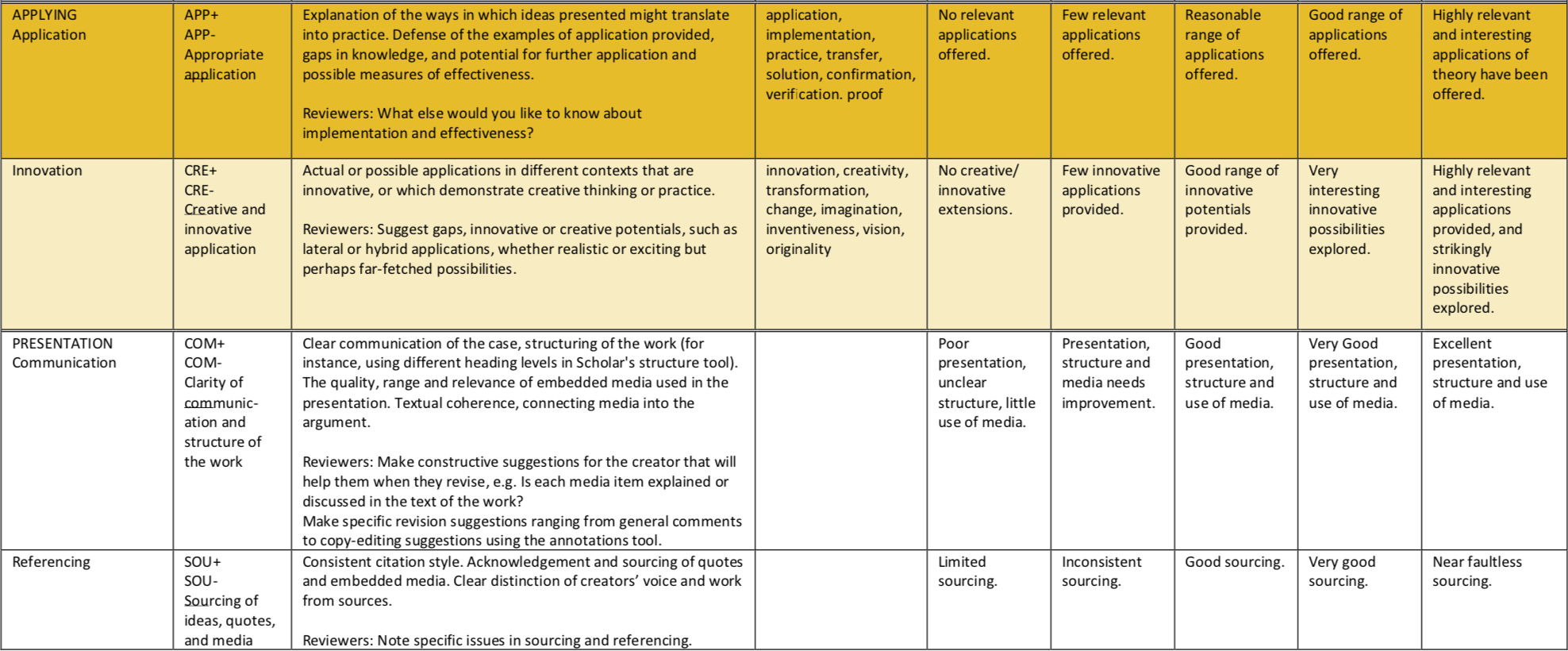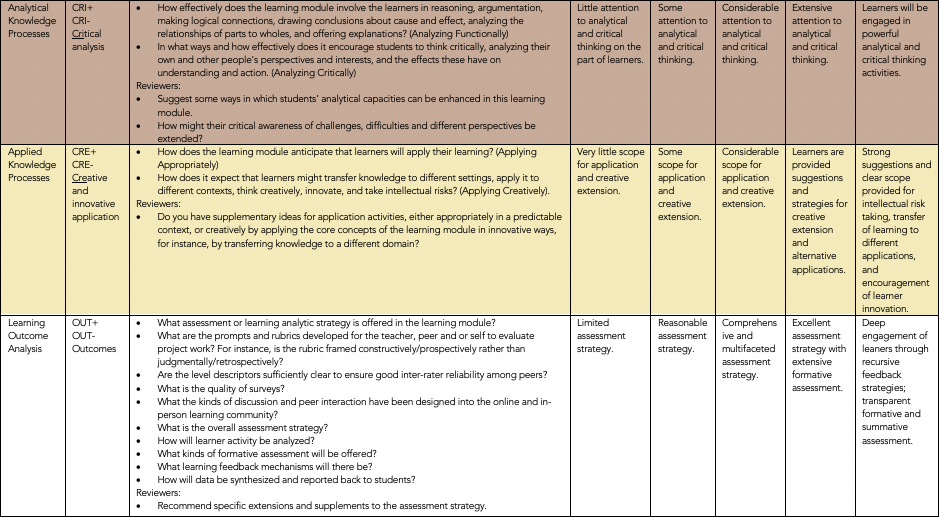
Image: Middlescapes
The peer-review rubrics that we use in these courses are based on our Learning by Design research, and before that, the Multiliteracies project. This is grounded in an epistemologically based theory of learning, conceived as different kinds of knowledge processes, or “things you do to know.” In the first instance, this is an action-oriented view of knowledge and learning, and only secondarily a cognitively oriented theory.
The purpose of the rubric is to support creators and reviewers to think systematically about the fundamental knowledge orientations of their work. The coded annotations are in order to highlight specific examples of each generalization in the rubric. We are also analyzing these annotations as part of a research project exploring the potentials of artificial intelligence in education, in which users train the machine to detect higher-order thinking and epistemological moves.
Here is our “knowledge process” theory of learning in a visualization. The rubric is color-coded according to this visualization
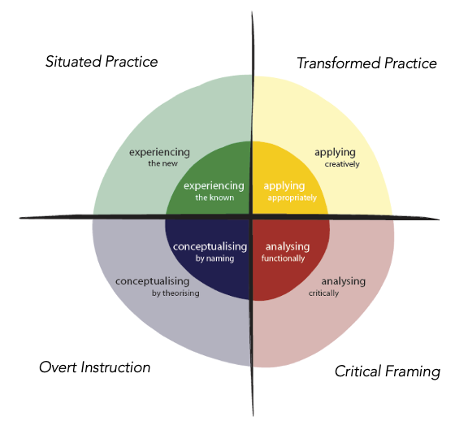
Works 1, 2A, and 2C and Meaning Patterns Work 1 & 2:
‘Knowledge Processes Rubric’ for Educational Theory and Practice
PDF version of the Knowledge Processes Rubric.
Supplementary table for Meaning Patterns Works 1 & 2:
Here are some of the ways in which interpretive methods map against this rubric:
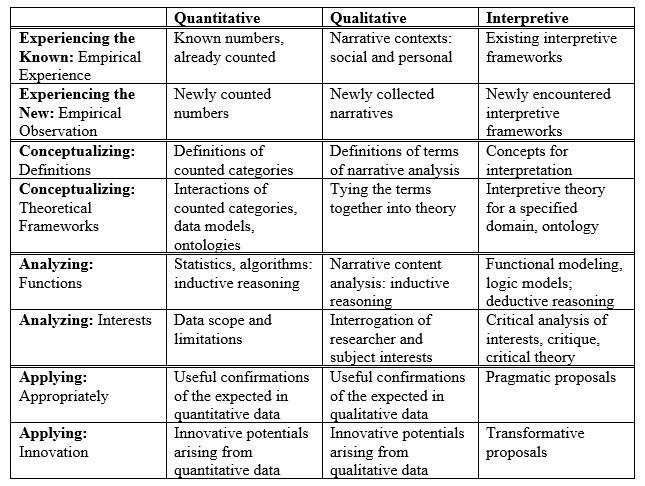
Work 2B:
Learning Module Rubric
PDF version of the Learning Module Rubric.
